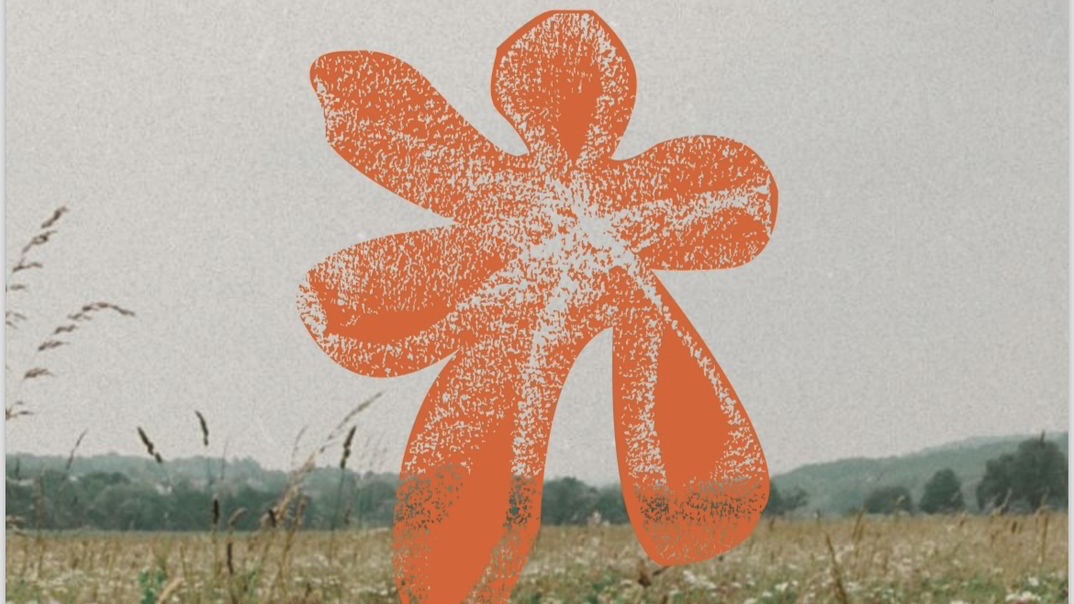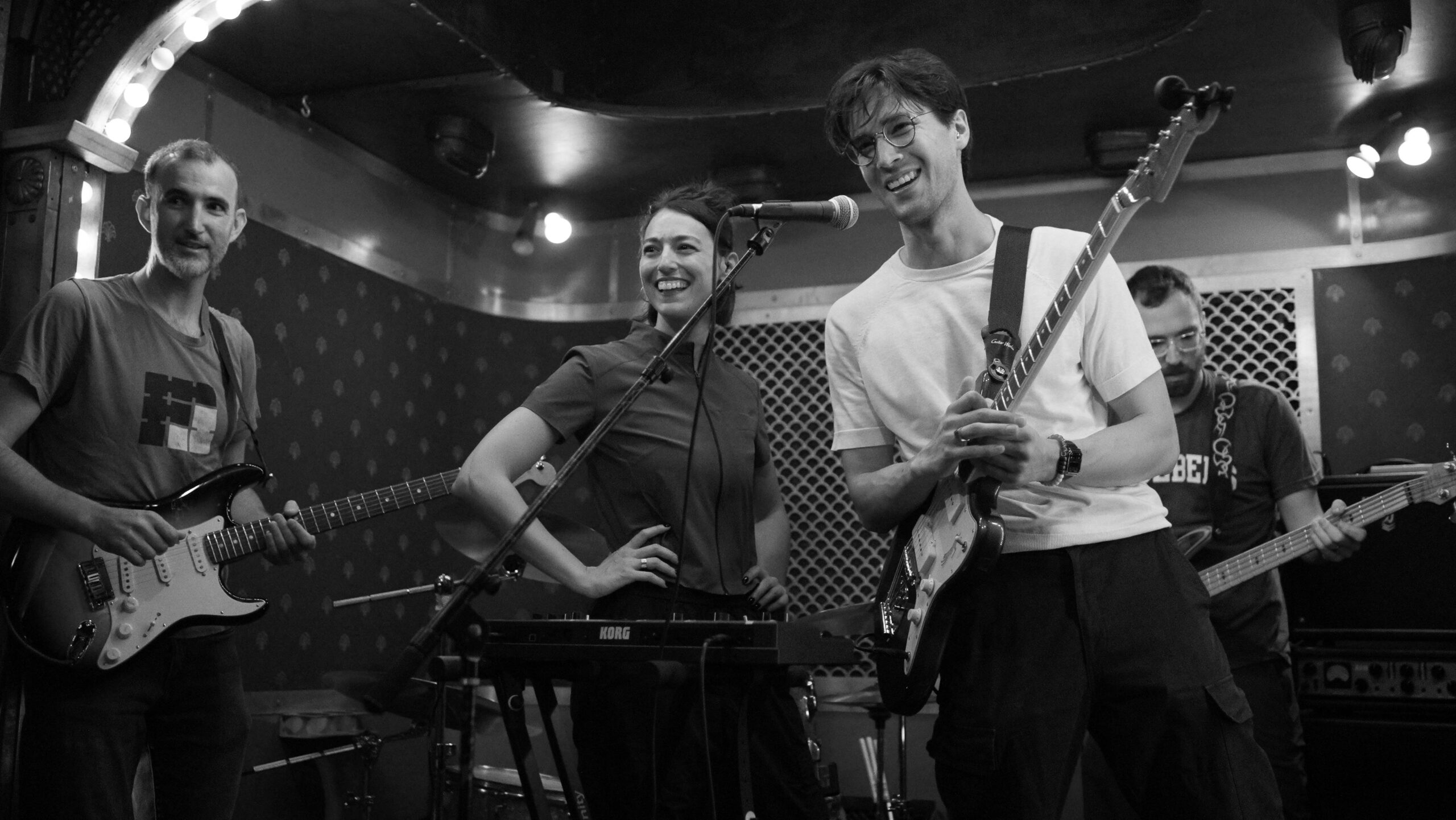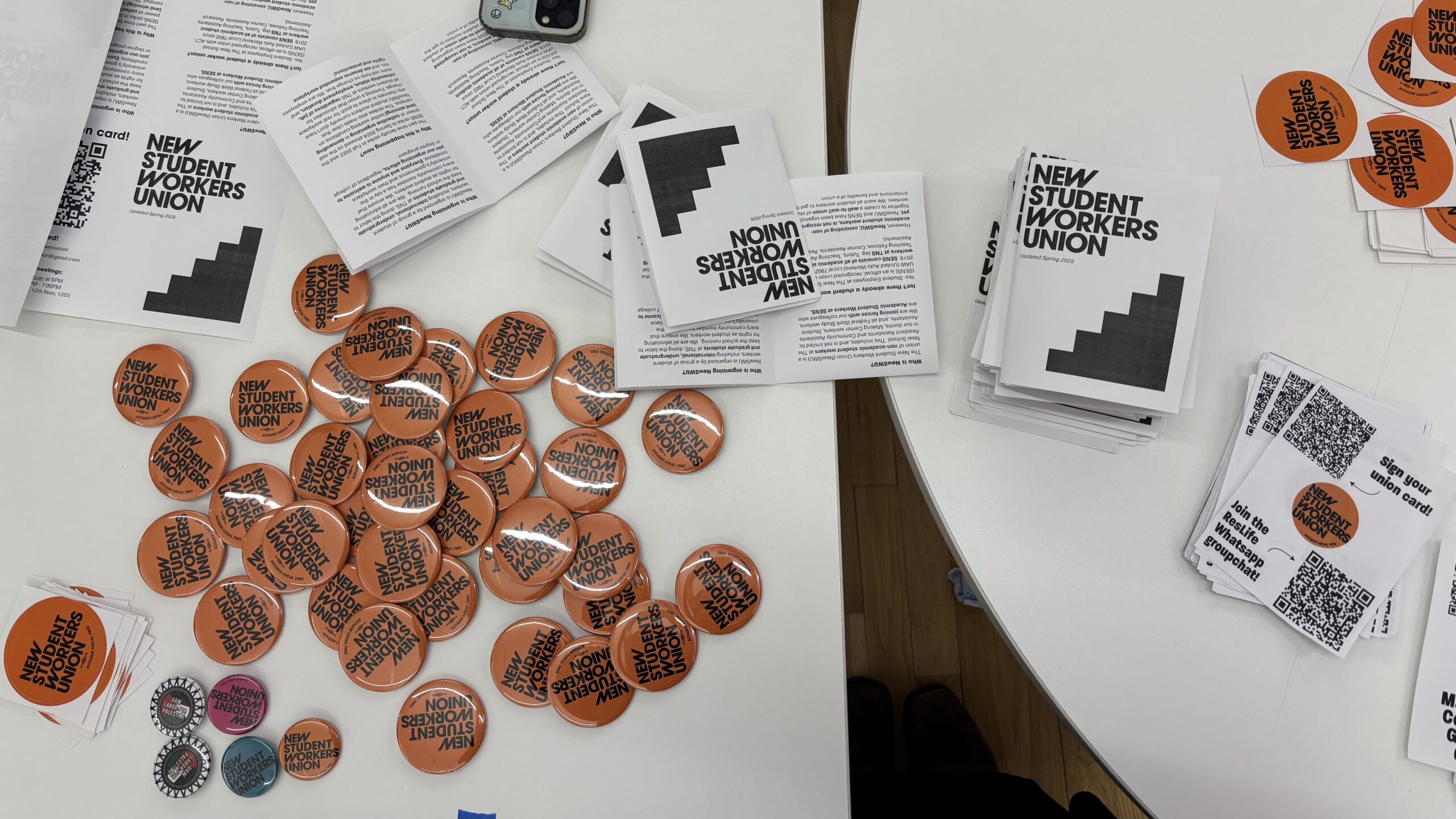The New School was founded in 1919 on the grounds of collaborating around progressive ideation. Scholars and professors from Columbia University migrated downtown with art and revolution on their heels, resisting censored systems of education by placing energy in newfound communities. Now in 2024, some New School students may feel unsupported when it comes to continuing the spirit of the university’s origin story, but a group of four integrated design fourth-year students at Parsons School of Design began to develop a project coined The New Gallery as a student-led initiative to combat this issue. They reasoned it’s time for The New School to retrace its steps, back to community.
The New Gallery — hosting its debut in the University Center Event Cafe on Dec. 5 — is a project pioneered by students and designed to include student art from across the university, an effort to melt any rigidity between The New School’s colleges. The gallery took submissions through Friday. Nov. 22 and currently plans to house 21 student artists including poets from Eugene Lang College of Liberal Arts, live musicians from the College of Performing Arts, as well as Parsons designers and artists. All participants were directed to respond to the prompt “humanistic imprint,” exploring not only the question of what they as individuals leave behind, but how they might contribute to The New School’s legacy.
At the project’s forefront is Renee Neme, a Parsons fourth-year from Mexico City studying integrated design and curatorial studies. “I started noticing there wasn’t any space for students to showcase their work,” Neme said in regards to where the New Gallery sprouted from. “Where is this space? Where is it? Where are all of these people?”
Neme recalled proposing the idea of the gallery to her studio class in September and speaking about it with friends. Several students, including fourth-year integrated design students Jenna Ferayo, Parvathy Ramesh, and Zevin Acuña filled in behind Neme as she began to organize the gallery’s framework.
Acuña, a friend and classmate of Neme, spoke to the beginnings of the project. “Her and I very much had a motivation to get things done, especially [when] we’re excited about these ideas,” he said. Acuña made the promotional poster art and took on the role of finding CoPA students to contribute live music during the gallery show. “Involving music … increases the levels of interaction that are so important for us as not only artists or designers … but just as people,” he said.
Ferayo has taken a role in promoting the gallery and finding a space for an after-party but also plans to have her art on display on Thursday, Dec. 5. Neme’s proposal stood out to Ferayo specifically for its inclusion of all schools. “Lang people don’t have the opportunity to be in a gallery space, I would suppose. Even [in] integrated design, this is so transformative for us,” Ferayo said. “[Our finals are] either going to be displayed maybe in the woodshop or on a skinny hallway in one of the floors of the Parsons building,” she continued. “They don’t have space to just showcase their art. Other than social media,” she said.
Otto von Busch, a full-time professor of integrated design at Parsons and faculty advisor on this project, meditated on Neme’s bewilderment at the lack of student exhibition spaces. “I feel like too often, a lot of the outcomes of so many classes end up in a folder somewhere or just become a pitch deck,” he said. “We have all these classes, but it’s hard for the school to muster enough and mobilize enough energy for these outside of the curricular initiatives.”
When Neme brought the proposition of The New Gallery to Busch, he was elated. “It’s a little bit sad that the school does not have really a space for student exhibition,” he said. Busch identified the two glass rooms facing 13th Street and 5th Avenue on the ground floor of the Parsons building as the sole official gallery spaces at the university, though they are mostly reserved for professional work, he noted. “There’s almost nothing in between your classes and then that level,” he continued.
Ferayo echoed Busch when she emphasized the lack of exposure students get within gallery spaces at The New School. “Bridging that gap of professionalism and higher education, I think at times is really lacking, especially at The New School,” she said.
Busch’s focus became entangled in helping students in charge of the gallery employ what he called a “DIY ethos.” For instance, he was in the Wood Shop in the Making Center with Neme and Ramesh earlier this week, crafting simple easels to place students’ art on. “We’re using just zip ties and duct tape … I think the whole idea is how do we do this as easy and simple as possible to encourage others to feel that they can also set up these kinds of initiatives,” Busch said.
At the heart of this endeavor is building community across schools — something that may get lost in translation if the institution prioritizes the individuality of each major and college over their collectivity. “[If] a lot of people that have great ideas [come together], they can break the system, and they can create this movement that we have been talking about so much,” Neme said, speaking to the untapped autonomy she hopes New School student artists can mobilize around. “It’s more building the community based on what our future could look like after we graduate.”
According to Acuña, the gallery theme, “humanistic fingerprint” braids the strands of The New Gallery’s communal efforts. “Everyone has a self that they bring with them. Wherever they go. Having this wide of a theme and this adaptable of a theme, just gave the most amount of people the opportunity to get involved,” he said.
Ramesh, another organizer, spoke about how the gallery will have its own adherence to the “humanistic fingerprint” theme. “There’s some activities I wanted to incorporate to create more post-documentation of the show,” she said, one of them being to offer disposable cameras to gallery attendees so they can capture the event through their own lens. Perhaps this is one way the organizers imagine The New Gallery will leave a lasting impression. Alternatively, as Neme, Ferayo, Ramesh, and Acuña will graduate this spring, they hope this gallery is an imprint on The New School’s collaborative atmosphere that they can leave behind for others to continue. “I want this to be picked up by people. Because it should be, there’s no reason for it not to keep reoccurring. It’d be a damn shame if it didn’t,” Ferayo said.
The New Gallery hopes to use resources The New School has to offer, in order to fill in the gaps where it fails to provide. Within the process behind its inception, integrated design students have thought beyond the bounds of the classroom to build something purposeful for The New School community. According to Busch, “I think that is what a design education really is. It’s about feeling that you have this agency and capabilities to transform an idea into something that you then can share with others.”








Leave a Reply